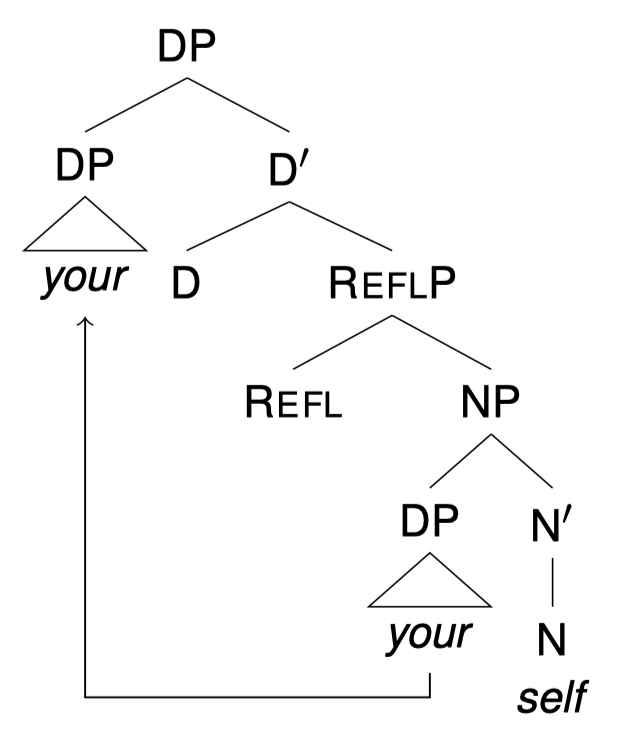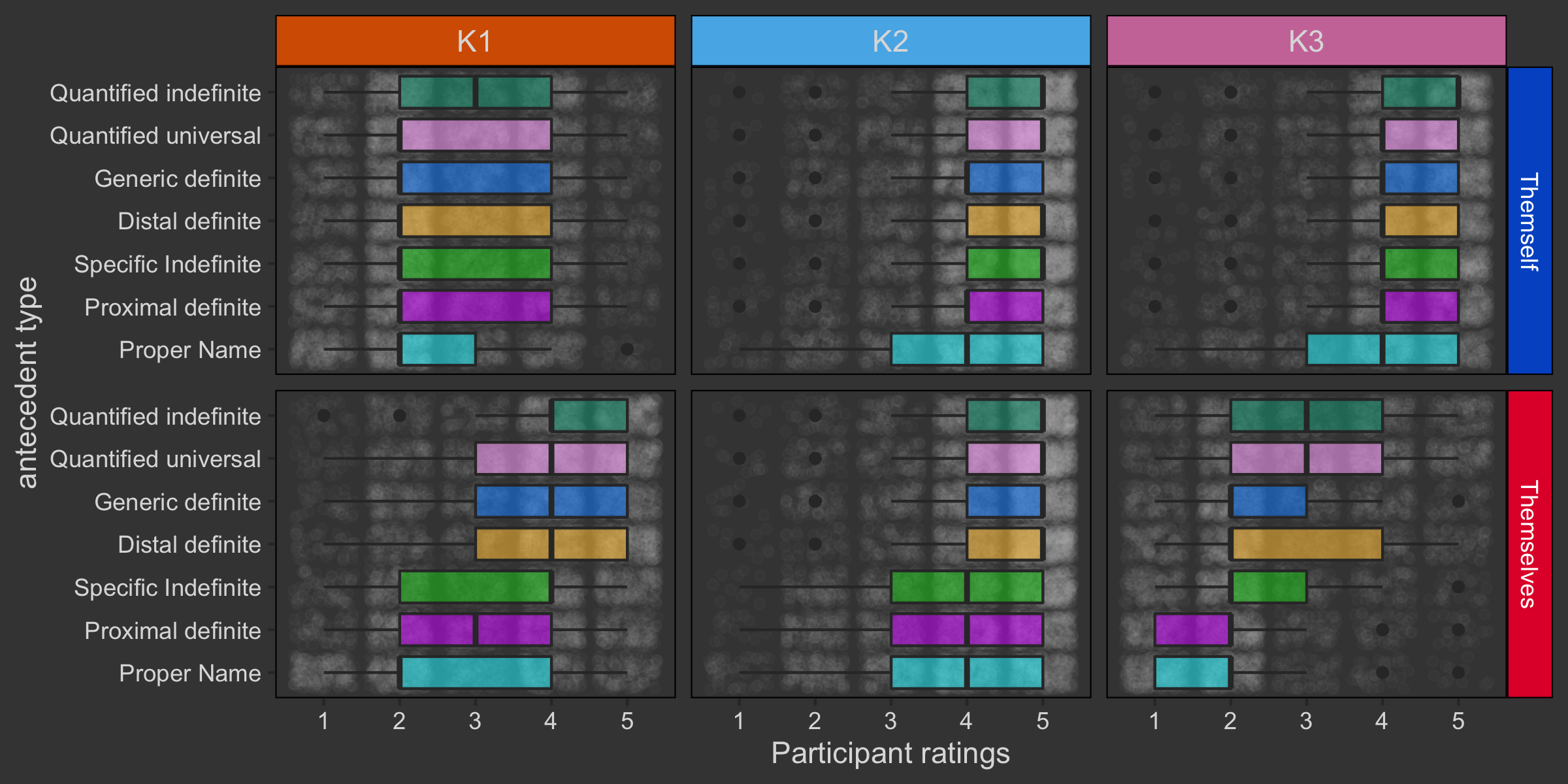English Reflexive Nominals
Theoretical and experimental work into the internal structure of reflexive pronouns like ‘yourself’
While much of the research on reflexivity has investigated the distribution of reflexive nominals in larger structures, this set of investigations deals in the internal structure of reflexive nominals in English.
A foundational finding in this research is that nominals like ourselves are composed of at least three morphemes: a lexical root √SELF, a possessive pronoun (our), and a morpheme that triggers allomorphy and allosemy in reflexive contexts (a functional head, REFL⁰). This is argued for in Ahn and Kalin 2018 based on well-attested form alternations like ‘himself’ ~ ‘his damn self’, alongside various constraints on when this pronominal alternation is (un)available.

Building on this, Ahn 2019 (et seqq) further explores the nominal structure of anaphors through the lens of φ-features. It has been widely assumed that the φ-features of bound pronouns must φ-match their antecedents. While generally true, there are several domains where φ-mismatches are regularly (and commonly) attested – and mismatch is constrained in informative ways. The patterns indicate that there are two derivational pathways for bound pronouns, such that 3.sg bound pronouns necessarily involve extra derivational machinery.
